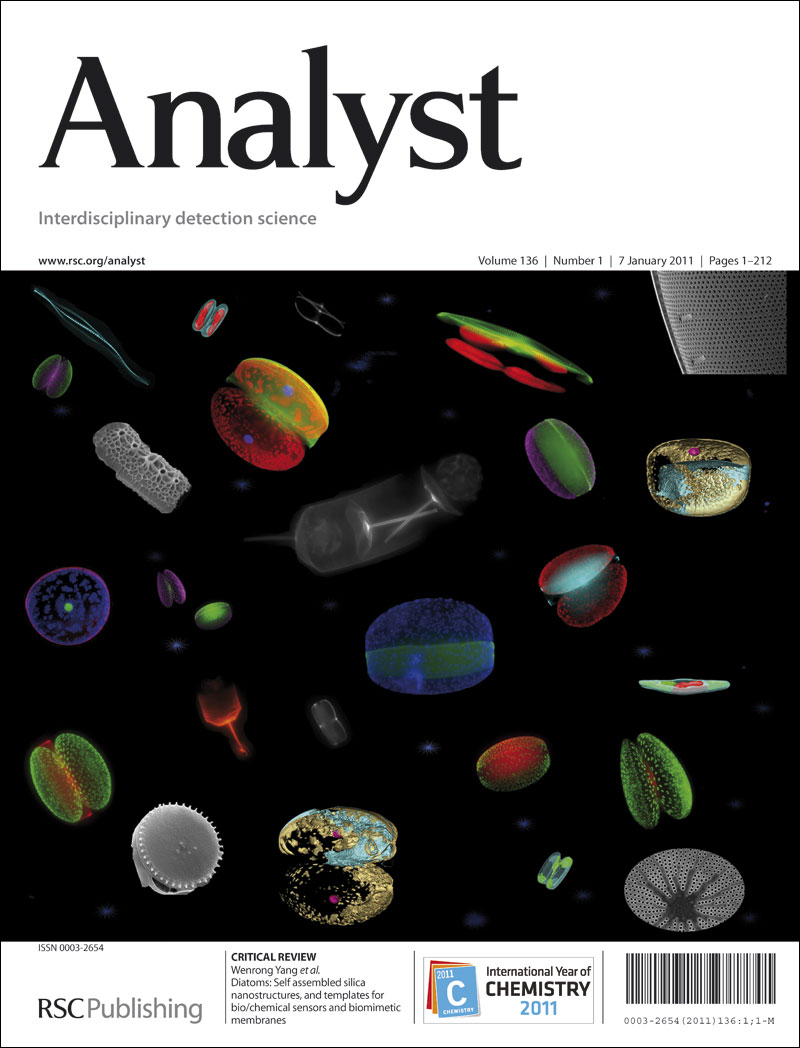MIL-68(In)-derived CdIn2S4 @In2S3 hollow microtubes for sensitive molecularly imprinted photoelectrochemical CEA sensor
IF 3.3
3区 化学
Q2 CHEMISTRY, ANALYTICAL
引用次数: 0
Abstract
Herein, an antibody-free photoelectrochemical sensing platform was constructed for sensitive carcinoembryonic antigen (CEA) assay by coupling with CdIn2S4@In2S3 hollow microtubes (HMTs) and polydopamine-mediated molecularly imprinted polymer (MIP). Among them, CdIn2S4@In2S3 HMTs, synthesized by Cd2+-exchange reaction on MIL-68(In)-derived In2S3 surface with large specific surface area, could promote the separation of photogenerated charge carriers by means of the shortened charge-transfer distance and the enhanced light adsorption, resulting in a stable photocurrent. Meanwhile, polydopamine-dependent MIP, electrodeposited on the surface of CdIn2S4@In2S3 HMTs-modified ITO electrode, could elute the template molecules to effectively recognize CEA without complex and expensive antibody-antigen assembly processes. In the presence of target CEA, the imprinted cavities could be re-embedded for inhibiting the diffusion of electron donor via a typical stereo-hindrance effect. Under the optimized conditions, the above sensor exhibited wide linearity range of 1 pg mL−1 to 500 ng mL−1, low detection limit of 0.52 pg mL−1, high selectivity and good stability. This sensor was also applied to CEA analysis in real human serum, providing a feasible strategy for selective detection of other biomarkers.MIL-68(In)衍生的CdIn2S4 @In2S3空心微管用于灵敏的分子印迹电化学CEA传感器
本文通过CdIn2S4@In2S3空心微管(hmt)和聚多巴胺介导的分子印迹聚合物(MIP)的偶联,构建了无抗体的癌胚抗原(CEA)检测电化学传感平台。其中CdIn2S4@In2S3 hmt是在MIL-68(In)衍生的In2S3具有大比表面积的表面上通过Cd2+交换反应合成的,通过缩短电荷转移距离和增强光吸附来促进光生载流子的分离,从而产生稳定的光电流。同时,将聚多巴胺依赖的MIP电沉积在CdIn2S4@In2S3 hmts修饰的ITO电极表面,可以洗脱模板分子,从而有效识别CEA,而无需复杂且昂贵的抗体-抗原组装过程。在靶CEA存在的情况下,印迹腔可以通过典型的立体位阻效应重新嵌入,从而抑制电子供体的扩散。在优化条件下,该传感器线性范围为1 pg mL−1 ~ 500 ng mL−1,检出限为0.52 pg mL−1,选择性高,稳定性好。该传感器还应用于真实人血清中的CEA分析,为其他生物标志物的选择性检测提供了可行的策略。
本文章由计算机程序翻译,如有差异,请以英文原文为准。
求助全文
约1分钟内获得全文
求助全文
来源期刊

Analyst
化学-分析化学
CiteScore
7.80
自引率
4.80%
发文量
636
审稿时长
1.9 months
期刊介绍:
"Analyst" journal is the home of premier fundamental discoveries, inventions and applications in the analytical and bioanalytical sciences.
 求助内容:
求助内容: 应助结果提醒方式:
应助结果提醒方式:


